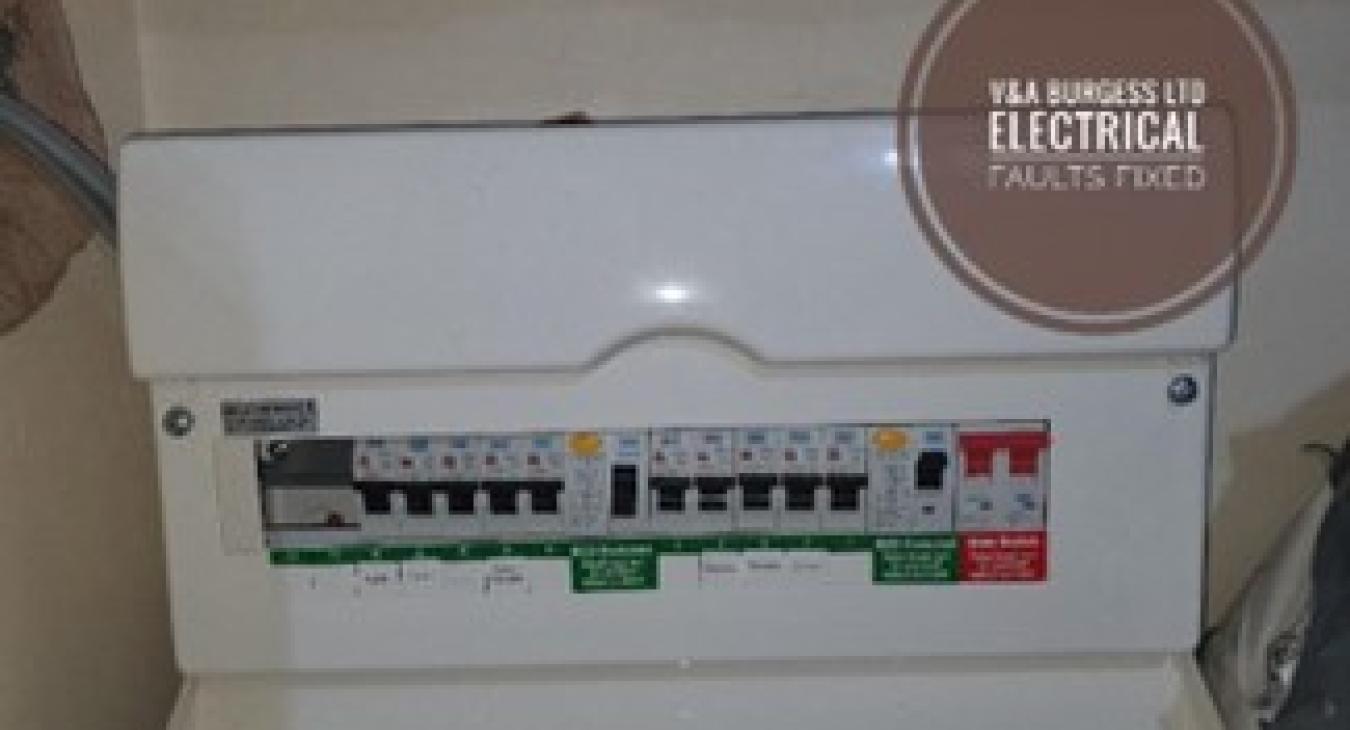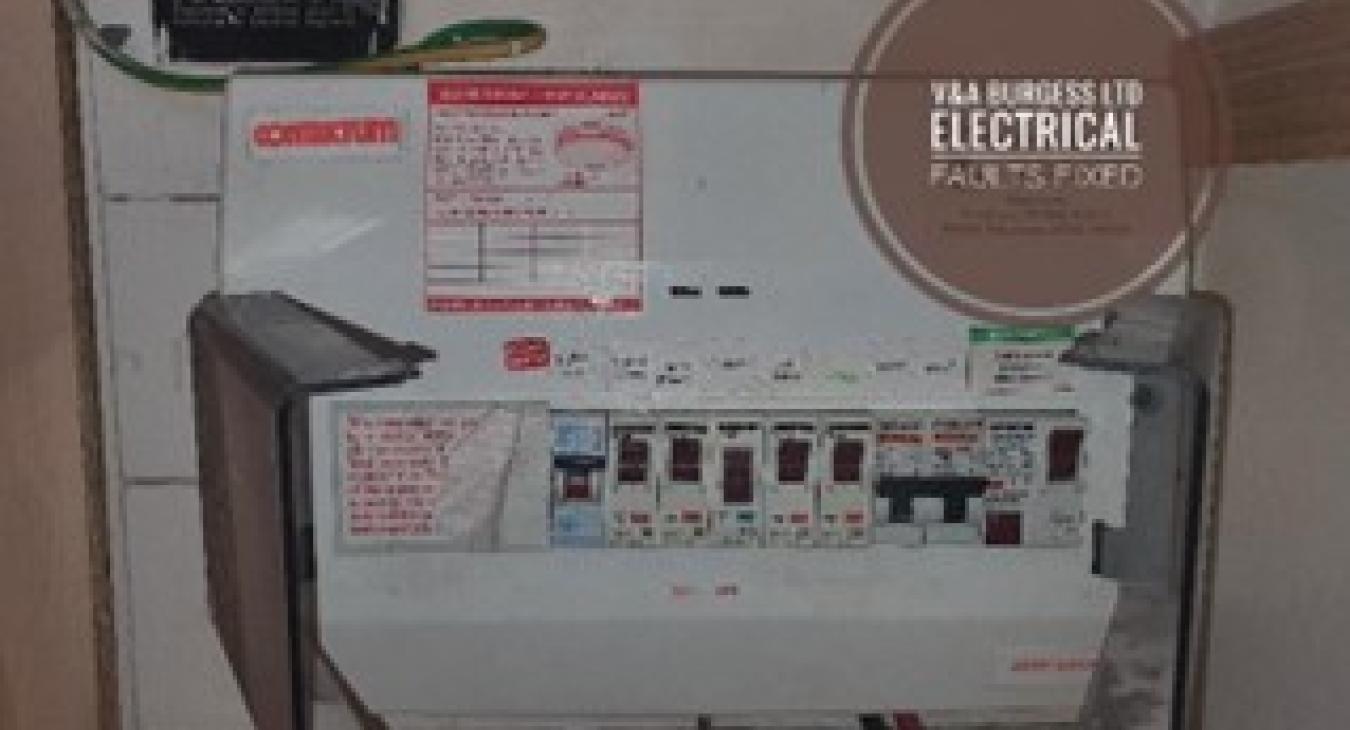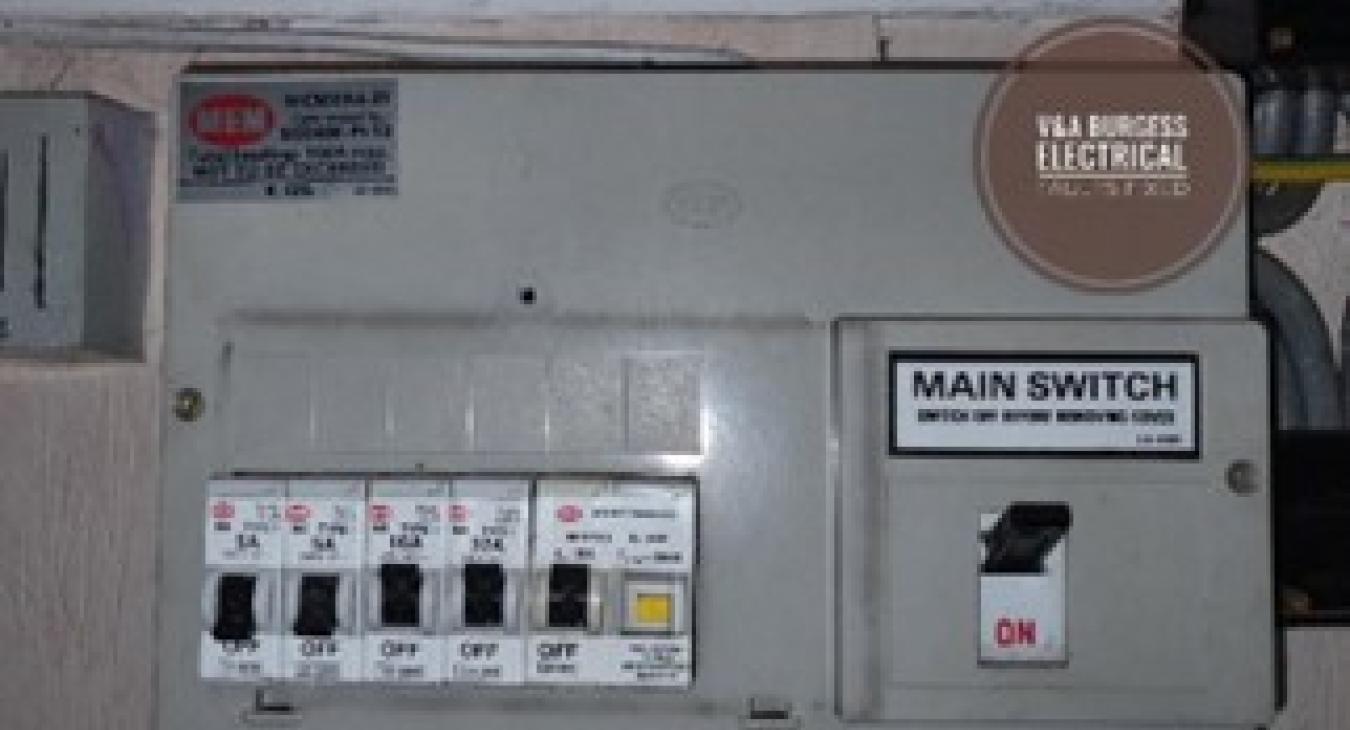Electrical Faults Fixed - Consumer Unit
The MAINS ELECTRIC BOX, also known as the consumer unit or fuse box, is the brains in every UK home's electrical system. It serves as the central hub for distributing electricity throughout the house while ensuring safety through circuit protection devices. The MAINS ELECTRIC BOX sits after any electrical meter box and is the nerve centre of the whole electrical system ensuring that the electricity supply is safely split into the correct number of circuits whilst ensuring that electrical overload is avoided.
In this comprehensive guide, we will look in detail at the mains electric box, covering its components, functions, regulations, and maintenance.
1) Components of the MAINS ELECTRIC BOX
Main Switch: The main switch is the primary control for the entire electrical power supply to your home. It allows you to turn off all the electricity in the house during emergencies, maintenance, or repairs. This switch ensures that no current flows through the circuits, providing a safer environment for electricians or homeowners working on electrical installations.
Residual Current Devices (RCDs): RCDs are crucial safety devices designed to protect against electric shocks and fires caused by faulty appliances or wiring. These devices continuously monitor the electrical current flowing through circuits. If an imbalance is detected, indicating a potential fault or leakage to earth, the RCD automatically trips, cutting off the power and preventing potential harm.
Circuit Breakers (MCBs): Circuit breakers, also known as Miniature Circuit Breakers (MCBs), protect individual circuits from overloads and short circuits. Each circuit in your home, such as lighting, sockets, or appliances, is connected to a specific MCB. If a fault occurs in any of these circuits, the corresponding MCB will trip, isolating the faulty circuit while allowing the rest of the house to remain powered.
Neutral Bus Bar: The neutral bus bar provides a common connection point for all the neutral wires in your electrical system. It ensures that the return current from various circuits can safely flow back to the electrical supply source.
Live Bus Bar: The live bus bar distributes electricity from the main switch to the individual circuit breakers. Each circuit is connected to the live bus bar, enabling the flow of current to different areas of your home.
Back to top2) Functions of the Mains Electric Box
Circuit Protection: The main function of the electric box is to protect the cables in the wiring installation from damage, overload, overheating and fire. The box will also, in some cases, protect against electric shocks, power surges and arcing faults from developing into fires.
Safety: The incorporation of RCDs enhances the safety of the electrical system by detecting and isolating faulty circuits that may pose a risk of electric shock. The RCD trip switch allows for the complete disconnection of electricity in emergencies to the circuits which it supplies power to and monitors.
Power Distribution: The mains electric box serves as the central point for distributing electricity to various circuits in your home. It ensures a systematic and organized flow of power to lighting, sockets, and appliances. The larger the number of circuits, the more control you have over the electrical installation.
Fault Isolation: When a fault occurs in a specific circuit, the corresponding MCB, RCBO or RCD trips, isolating the faulty circuit while keeping the rest of the house powered. This feature allows for easier identification and resolution of electrical issues. The more electrical circuits there are that are separated by individual protective devices, the less inconvenient an electrical fault becomes.
Back to top3) UK Regulations and Standards
Wiring Regulations (BS 7671): The UK Wiring Regulations, commonly known as the 18th Edition (BS 7671) 2018-Present, set the standards for electrical installations. Compliance with these regulations is mandatory to ensure the safety and reliability of electrical systems. The regulations cover various aspects, including the design, installation, inspection, and testing of electrical installations. Any new consumer unit installed along with the electrical circuits connected, would have to comply with BS7671 regulations.
Consumer Unit Location: According to the wiring regulations, consumer units should be readily accessible for inspection, located in a safe and easily accessible location. They should not be installed in rooms containing a bath, shower rooms, or any location where the environment surrounding them is likely to adversely affect them. This is to prevent the risk of electric shock and other electrical issues.
RCD Protection: The 18th Edition mandates the use of RCD protection for most domestic circuits, including sockets, lighting, and outdoor installations. This requirement aims to enhance safety by providing additional protection against electric shock and fire hazards.
Metal Consumer Units or (non-combustible construction) consumer units are now mandatory when replacing or installing a new consumer unit. Metal enclosures can contain a fire within the unit, preventing it from spreading to the surrounding environment.
Back to top4) Maintenance and Inspection
Regular Inspections: Homeowners should conduct regular visual inspections of the consumer unit to check for any signs of damage, overheating, or loose connections. Any issues should be promptly addressed by a qualified electrician.
Periodic Testing: Periodic testing and inspection of the electrical installation by a qualified electrician are essential to ensure compliance with regulations and identify potential faults. This testing may include checking the operation of RCDs, testing circuits, and ensuring the integrity of wiring.
Upgrading Consumer Units: Older homes may have consumer units that do not meet current safety standards. In such cases, upgrading to a modern consumer unit with RCD protection is recommended to enhance the overall safety of the electrical system.
Hiring a Qualified Electrician: For any maintenance or repair work on the consumer unit, it is crucial to hire a qualified and registered electrician. DIY attempts can lead to safety hazards and may not comply with regulations.
Back to top5) Troubleshooting Common Issues
Tripping MCBs: If MCBs are frequently tripping, it may indicate an overload, a faulty appliance, or a short circuit. Identifying the specific circuit causing the issue and addressing the underlying problem is essential. When an MCB trips it often does so for different reasons than an RCD device, regardless of this, the issue needs to be investigated as serious damage can occur to electrical systems if faults are not rectified.
RCD Tripping: RCDs may trip due to earth leakage, indicating a potential fault. Disconnecting appliances one by one and observing which one causes the trip can help identify the problematic device or circuit. There are a variety of other reasons why an RCD would trip and these are covered here.
Burnt Smell or Overheating: A burnt smell or overheating around the consumer unit is a serious issue and requires immediate attention. It may indicate loose connections, damaged wiring, or an overloaded circuit.
Flickering Lights: Flickering lights could be a sign of loose connections or a faulty circuit. Professional inspection is necessary to identify and rectify the issue. There are many possible causes of flickering lights and not all are serious. Possible causes could be equipment incompatibility, faulty lamps, faulty dimmer switches and issues with overheating in the electrical system.
Back to top6) Different Types of Consumer Units or Mains Electrical Box
There are many a different type of Main fuse box installed in homes throughout the UK. The most common type in older properties with old electrical installations are the wooden back rewireable fuse wire style fuse boxes. These old fuse boxes are now obsolete and many require replacing for a new fuse box / consumer unit. As an absolute minimum these boxes and the rest of the electrical installation should be subjected to an electrical inspection.
Then there are plastic consumer units. These style of electrical panel were common during the 16th edition and generally had newer electrical devices installed in the form of trip switches and RCD / RCCB / GFCI devices installed for the power circuits like plug sockets. This offered some peace of mind to homeowners that there was electric shock protection installed on the vital circuits to prevent the flow of electricity in the event of an earth fault. Whilst this was a good idea, the UK standard once again changed and saw different consumer units installed when the 17th edition came about.
DUAL RCD Consumer units. During the 17th edition we saw all circuits typically protected by RCD with the use of the DUAL RCD consumer unit. These units were plastic to begin with and as the 17th edition progressed, any fuse box replacement saw a metal consumer unit installed to meet the required standards.
High integrity consumer unit type mains electrical boxes saw Dual RCDs and also some separate ways available for circuits that did not require GFCI or RCD protection.
These newer types of consumer unit meant that in the event of an emergency such as a serious electrical issue, the fuse box keeps power supplied to certain circuits in the property and means that inconvenience is minimised. An old-fashioned fuse box simply did not have the technology to detect many of the electrical issues that the newer ones can and a live wire could still deliver a fatal shock whereas with a newer type of consumer unit, the chances of this happening are greatly reduced. Regular inspections, compliance with the regulations, prompt resolution of issues, and correct maintenance by a certified electrician contribute to a safer and more reliable electrical system. By prioritizing the maintenance and proper functioning of the mains electric box, homeowners can ensure the well-being of their households and protect their properties from potential electrical hazards.
Read more articles
- Log in to post comments




